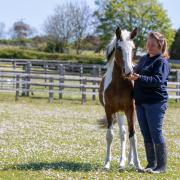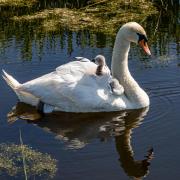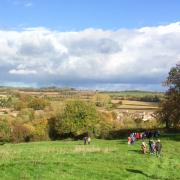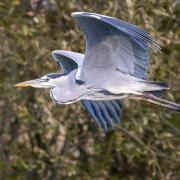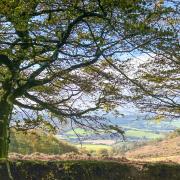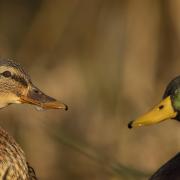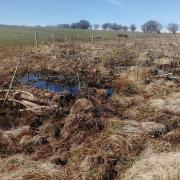5 Exmoor animals you can spot in the national park this month
Exmoor Ponies
Exmoor Ponies are thought to be the oldest pony breed in Britain, mentioned in The Domesday Book so dating back to at least the 11th century. They nearly became extinct during Second World War but numbers have risen again thanks to the efforts of the Exmoor Pony Society and Moorland Mousie Trust. They are now a relatively common sight on the moorlands, with approximately 500 ponies roaming freely throughout Exmoor National Park.
Perfectly built for life on the open moorland, they help with conservation due to their grazing on tough vegetation that other animals avoid. They are short, stocky and hardy with a fine and glossy coat during the summer, growing into a thick two-layered protective coat to help them survive cold, wet winter weather. They can be varying shades of brown with a dark brown or black thick mane but all have a distinguishing paler, mealy colour around the eyes, nose and underparts.

Red Deer
Exmoor is home to approximately three thousand red deer, Britain’s largest wild land mammal with the stags standing up to four feet at the shoulder. They have lived freely on the moor for hundreds of years, using the woodlands for cover and feeding on young shoots of heather, brambles, saplings, grass – as well as farm crops.
During the summer the coats of the deer are the beautiful russet red colouring that provides their name. But as winter approaches, you’ll notice the coat takes on a browner shade and is rougher and thicker.
For most of the year the stags and hinds lead separate lives within their own herds. Towards the end of September, the stags become restless and head off in search of hinds. The mating season, or ‘rut’, is at its peak in mid October, but by November the intense competition between the stags should be calming down as new herds are formed.

Otters
The otter population declined across Britain during the 20th century as a result of pesticides used in intensive agriculture. Surveys showed that during the early 80’s there were fewer than 10 individual otters on Exmoor. But it’s now good news. With the banning of certain pesticides, otter numbers are thriving again on Exmoor, testimony to the quality and condition of the rivers.
It’s a great success story, although you will still be lucky if you actually get to see one of these notoriously elusive animals. They are predominantly nocturnal and rarely seen during the day, so the best time for otter spotting is at dusk and dawn when they come out to feed, but you’ll need to be patient, as they are wary and easily disturbed. They principally eat freshwater fish, but will also supplement their diet with amphibians, crustaceans and waterbirds like moorhens and coots should the need arise.

Bats
With its diverse range of habitats, Exmoor National Park is home to all 18 native British bat species, including some of the rarer ones such as the Bechstein.
Although bats are most active between April and September, you might just be lucky in spotting one in November if it’s not too cold. They hibernate for the winter, emerging again when nights become warmer in the spring. The best time to watch them is at dusk; they are nocturnal and leave their roosts at sunset to feed on midges, moths and other flying insects. There are a number of evening ‘bat walks’ to join which take you around the coastal woodlands and heathlands in Exmoor. It is a great way to learn more about these fascinating creatures, how to identify them and, with the help of specialist bat detectors, you will also have the opportunity to hear them as they hunt. exmoor-nationalpark.gov.uk

Dung beetle
It’s worth watching where you are walking on Exmoor in case you come across these industrious little beetles, often to be found trundling along footpaths. As their name suggests, the dung beetle's existence is completely dependent on animal dung, including cattle, sheep, horse and deer. Some are happy with any, whilst others are specific to one breed of animal’s dung.
They provide a vitally important ecosystem service: these busy little beetles recycle nutrients from the dung back into the ground which improves the quality and structure of the soil. They also help to reduce parasite burdens in livestock. Two rare species of dung beetle can be found living on dung in grasslands which have not been intensively managed; they are susceptible to changes to agricultural practices and intensification.
Part of the grand circle of life, they also provide an important part of the diet for many species including the rare Greater Horseshoe bat.








